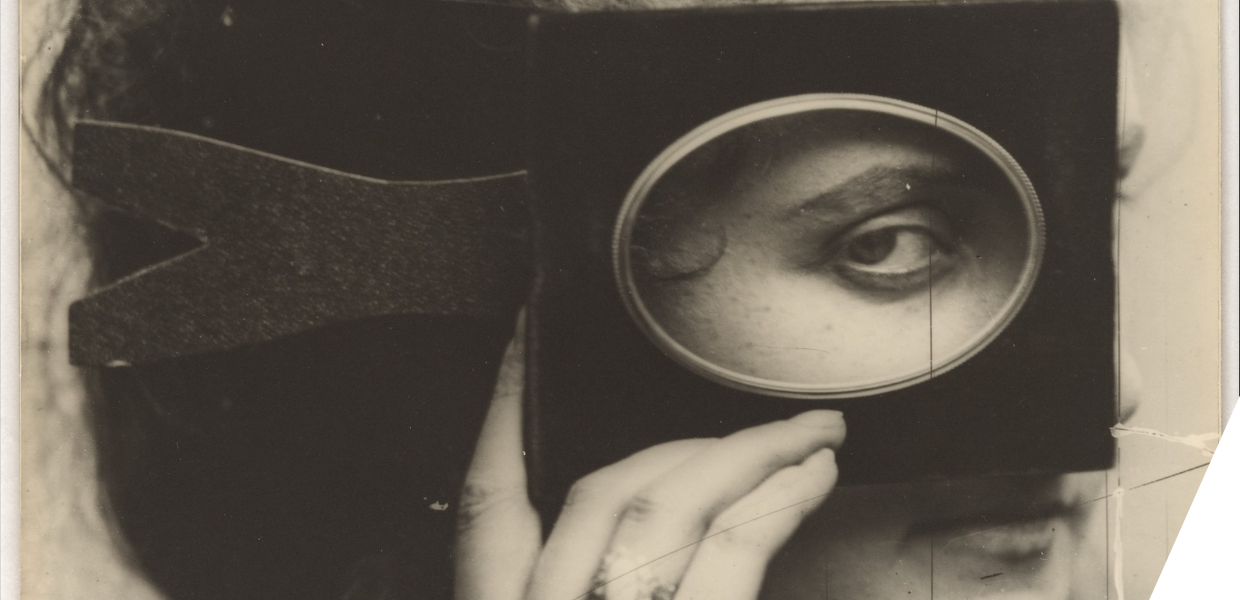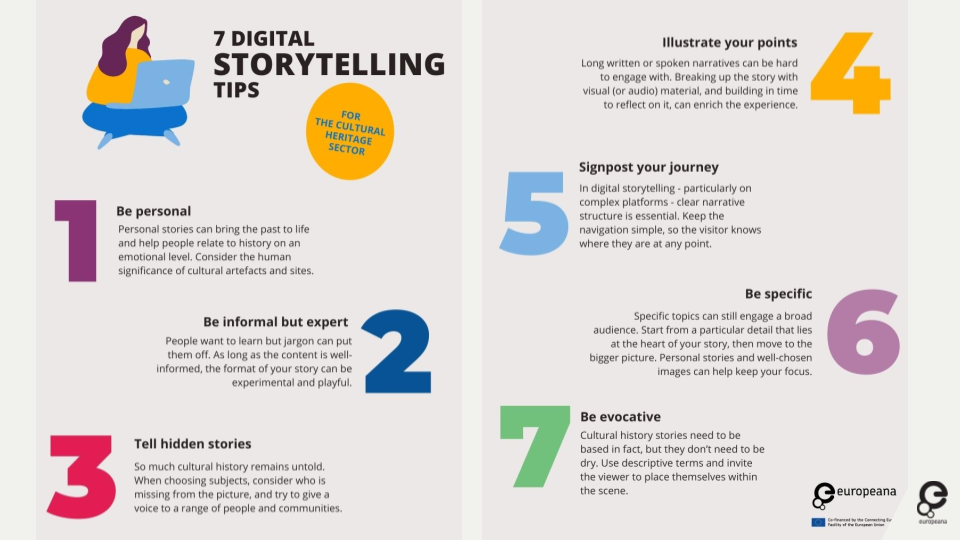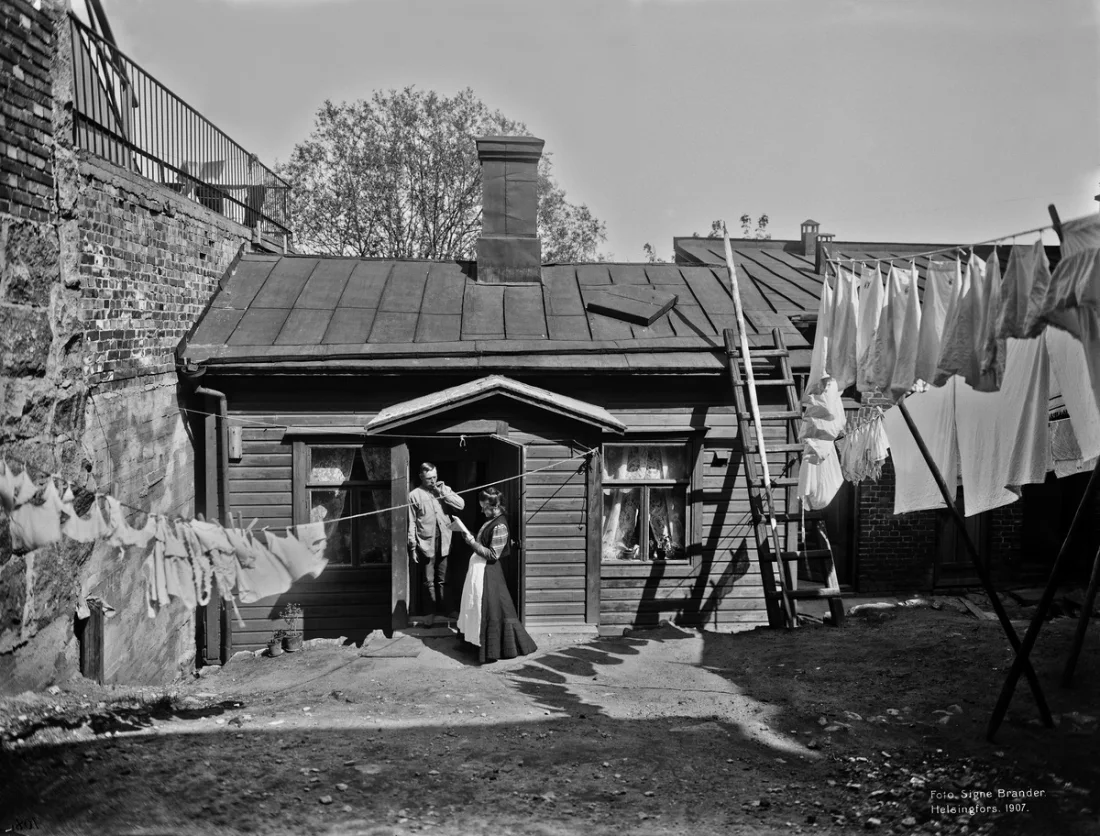Three storytelling workshops
Our process was structured around three workshops, with participants being asked to carry out activities in between each one. We used Google Meet, Docs and Jamboard to collaborate.
Workshop 1. Concept.
Brainstorm ideas: For us, this meant sharing what we already knew or were interested in on the subject of women and photography.
Identify themes: Here, we saw how our ideas were naturally falling into distinct areas such as first photographs, photography for activism, or self-portraiture.
Consider available content: For us, this meant looking at the content available on Europeana.eu and thinking about issues around copyright - what we could and couldn’t use.
Audience connection: Here, we reminded ourselves of the seven digital storytelling tips, and we used the Europeana Impact Playbook’s Empathy Map to think about the audience experience. We discussed what makes an exhibition engaging and shareable for our audience.
Next steps: Here, each person noted down the role they wanted to take and what they could realistically commit to doing before the next workshop.
Our homework was to research the themes we identified and explore some stories that might be included in the exhibition.
Workshop 2. Shaping.
Review progress: As each person shared the stories they had discovered, the others listened and added words, phrases or ideas that stood out to them to our ‘Board of excitement and intrigue’.
Devise structure: Together, we organised these stories and ideas into chapters.
Next steps: Each person decided what to take on next in terms of writing texts and further research.
Our homework next was to write initial drafts of the chapters we had discussed.
Workshop 3. Reflections.
Review progress: Having shared the draft texts, we reflected on what was remarkable or interesting about the ideas so far, what questions and concerns we had (for example, what was missing from the stories) and what actions we could take to remedy them.
Audience connection: We revisited the storytelling tips and shared ideas about how to apply them in this instance, for example, to include personal quotes from the people we were writing about, and to make our images work harder - we noted for example how effective it is when the text makes direct reference to a photograph, rather than having the photograph simply lie alongside the text as an illustration.
Next steps: Together, we decided on editing responsibilities, making sure that nobody edited the chapter they drafted. This way, we had fresh eyes and ideas on every section.
Once this round of editing was complete, we asked two external readers to proofread the texts and also make any observations they had about the content and structure and what might be missing. From here, the exhibition went into production.
Jolan Wuyts, Collections Editor, was part of the exhibition team. He says, ‘I really enjoyed the story-first approach of this creative process. We started with the interesting individual narratives and stories we found in Europeana's database and then worked together to embed those stories into a coherent whole. This allowed me to focus on just one or two petites histoires that I was enamoured with, and then place that in the larger historical context that the rest of the exhibition provided.’





